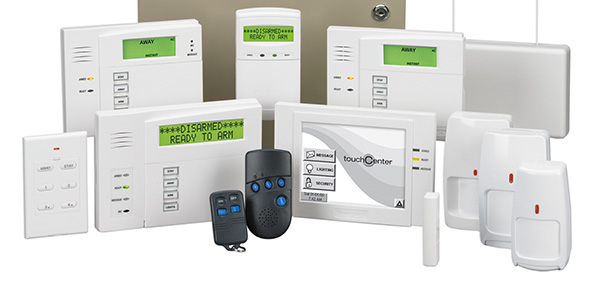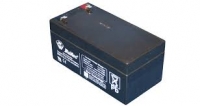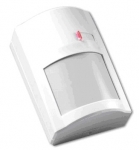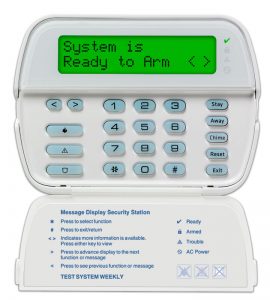Security Alarm Systems
Why should I get an Alarm System?
A properly designed and installed and monitored Security Alarm System is the best way to protect your property and belongings, and most importantly, your loved ones.
Do I really need a Monitored Alarm system?
Yes, you do. We’ve been in the Alarm System business for a long time, and we can tell you, there’s little point to going to the expense and trouble to install an alarm system, but then not have it actually do anything much when there is a problem – other than turn on a siren.
With a Monitored Alarm System, as soon as an alarm is triggered or a panic button is pushed, the Alarm System will send a Burglary, Fire or Medical signal to the central monitoring station. The Monitoring station will then dispatch the appropriate authorities to your address, then call to notify you.
What does an Alarm System protect?
Security alarms protect all exterior doors and windows as well as inside homes and buildings, using motion detectors and sound/glass break detectors.
Alarm systems can also monitor and supervise a variety of life-saving devices such as smoke detectors, heat detectors, carbon monoxide detectors, and flood detectors.
Many homeowners, especially seniors, also choose an optional Panic Button, a small portable device that can be kept handy, and if an emergency arises, to contact the Alarm Monitoring company.
Is Alarm System Monitoring expensive?
Not really. At least, not when you deal with Alarvac. We use API Alarm Monitoring, one of Canada’s leading Alarm Monitoring companies, and offer a modest monthly fee, and we don’t ever lock you into a contract or hit you with all sorts of extras” like “Internet access fees” or charge you for “email and text alerts”. Alarvac can provide you with all those features without additional monthly costs.
Alarm and Camera Management Software (CMS) has become so user friendly that almost anyone (after initial set up or with basic computer software knowledge) can manage and use the program without the need of long term “maintenance” or “software upgrade” costs that can go on forever!
What about those “Free” Alarm systems?
Here’s how it works: The alarm company installs a so-called “free” alarm system, and then recoups the cost of the system by locking you into a long-term contract with high monthly monitoring costs. Many customers also find extra charges for things like “internet access fees”, “e-mail fees”, “text fees”, “maintenance fees”, “software upgrade costs” and so on.
In many cases, no matter how much or how long you pay for monitoring fees, you don’t actually ever own the alarm system. Instead, according to the fine print in the contract, your alarm system is leased – a rental. Once these companies are no longer receiving an income stream from your inflated monitoring fees, they can – and in many cases, they will – come and remove their alarm system.
Unfortunately, these “free” alarm systems are usually very basic $300 to $400 systems with limited functionality and cheap components. We don’t really see the point of installing an alarm system and paying for monitoring, then hoping that if there’s a problem, the most basic system available will function as advertised.
All told, you actually end up paying more for this so-called “free” alarm system than you would for a good quality alarm system that you can trust to do it’s job when you need it to perform.
We’ve been in our house for years without a problem, why would we need an Alarm system now?
While Toronto is still one of the safest large cities in the world, the population growth that Toronto is currently experiencing is unfortunately accompanied by an increase in burglary and other property crimes. More than ever before, you need an alarm system to protect your property and loved ones.
Secondly, people’s needs change with time. Seniors especially, and other vulnerable people need the protection and immediate response that a Monitored Alarm System provides. And for caregivers, when you can’t always be there, it’s important to know that if there’s a problem, that appropriate help will be dispatched, and you will be notified.
What if I don’t have a landline?
More and more households are choosing to not install a landline telephone.
While alarm systems can use a landline to connect to a monitoring station, you can also choose an alarm system which communicates wirelessly over the internet, or through a GSM unit using cell technology.
Having an alarm system that connects wirelessly to the internet means that you can have remote access and control of your security system, and will be able to access it from your mobile device.
A GSM communications option for your Alarm System allows your system to communicate with the monitoring station even if burglars have cut land lines and internet/cable lines. It will even work if the power is off because the control panel has a battery backup, and will still be able to connect to the monitoring station to report a problem.
Do I even need a monitoring contract?
We don’t think so. Alarvac provides alarm system monitoring from API, one of Canada’s leading alarm monitoring companies, without locking you into a long-term contract, and without the hidden, long-term costs that have traditionally been part of most alarm systems up until now.
Whether you need a simple basic alarm system or the most advanced IP Network system, when considering a Security Alarm or Surveillance Camera system, there is no need to pay for monthly “access” or Camera Management Software. Not only do these sorts of systems have a high upfront cost, but they typically also have “hidden”, long-term “maintenance” and “upgrade” costs that end up costing you thousands of dollars more.
Can I get an insurance discount if I have an Alarm System installed?
Monitored Alarm systems are recognized by insurance companies as effective systems and they therefore offer their clients a monitored alarm systems discount.
Don’t wait, call us NOW
Alarvac installs and services all popular Alarm System brands including DSC, Ademco, Panasonic, GE as well as other leading brands.
We recommend DSC security products. DSC is leading Canadian manufacturer with worldwide distribution, with products that range from basic residential systems to advanced commercial requirements. DSC’s full-featured systems integrate with leading Home Automation Systems providing you with the convenience, peace of mind and protection that you and your family needs.
CALL 416-520-4080 or email info@alarvac.com TODAY to get the security and protection you need.
Security System Key Terms
Security Alarm – Also known as a Burglar Alarm or Home Alarm, this electronic alarm system provides perimeter and interior intrusion detection and burglary protection for a home or business. A Security Alarm is an important part of a complete Security System.
Security System – A Security System includes a Security Alarm, Cameras, Access Control and Communications Systems, as well as physical security components such as security bars. When armed, sensors detect when an event occurs, such as a door or window being opened, and sounds an alarm. Cameras can be monitored in real time, or review to see what happened when the event occurred. The Security System also communicates with a monitoring station to provide the appropriate response.
Motion Sensor – Also known as a Motion Detector, this security system component sends a signal to the control panel when it detects movement within its ‘view’. These small, discreet sensors are usually strategically placed on a wall or corner, close to the ceiling. The most commonly used sensor is a Passive Infrared (PIR) sensor, which responds to changes in temperature and movement. Other motion sensors can be microwave sensors, ultrasonic sensors, tomographic sensors, and combination sensors. For example, a combination PIR and microwave sensor will monitor an area, and when the infrared sensor detects movement, the microwave sensor will activate, and when both sensors detect movement, then the sensor will generate an event signal.
Voice Response – also known as two-way-voice monitoring, this feature allows you and the monitoring station operator to communicate directly when an alarm or panic button is activated, and provide information to get a better response. Alarvac installs this type of system and provides two-way voice monitoring services.
Monitoring – This is the communication between your home security system and your security provider. When your control panel registers an event, it sends a signal to the monitoring station. The monitoring station will respond to the signal by dispatching the appropriate authorities to your home. The monitoring station response will be tailored specifically to your needs. For example, you can choose whether to have a private security firm respond to intrusion alarms, or have the police respond directly.
While alarm systems can be set up without monitoring, the real value of the alarm system is in the monitoring, which provides an appropriate response when an event is detected.
Keypad – This the interface between you and your security system. It allows you to arm or disarm the system, program the system, and access system information. It is small, discreet wall-mounted unit with display and buttons. One keypad is typically mounted near the most frequently used door. Multiple keypads can be used for different entrances, as well as in the Master Bedroom, to arm the system at night.
Control Panel – The Control Panel is the brains of your home security system. It consists of electronic circuits in a metal cabinet, usually mounted out of the way in a closet or in the basement, or near the electrical panel. It receives input from sensors, and is programmed to respond to various events, and communicate with outside monitoring agencies. The control panel is managed via one or more keypads.
Sensor – A typical security system includes magnetic switches that detect when a door or window is open. Other types of sensors are motion detectors, glass breakage detectors, smoke detectors, carbon monoxide detectors, and basement flood detectors. A “panic button” is another type of sensor.
Pet Immune Sensors – Infrared motion sensors with this feature can be set up to ignore animals, making them more resistant to false alarms. Some sensors can be adjusted for animal size, number of animals (one large animal vs. multiple small animals), as well as animal activity levels.







